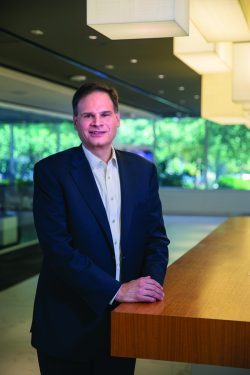The HR behind Marriott’s $13 billion Starwood merger
- Andrew R. McIlvaine

HR Executive of the Year (as judged by HR Executive magazine in the US) David Rodriguez has had a stellar 21-year career with Marriott International, including the last 13 years as its global Chief HR Officer. Across a wide range of achievements, his successful (and ongoing) change management associated with Marriott’s US$13 billion merger with Starwood Hotels and Resorts (including the W. Chain – pictured). stands as one of the most momentous.
Certainly, that is the opinion of the company’s President and CEO Arne Sorenson. “[The merger] was the largest influx of associates in company history,” he says. “David… stressed the common characteristics of our cultures, rather than obsessing about process differences, which could easily become attributable to culture conflicts.”
Rodriguez says this went against the typical integration strategy of a larger merger or acquisition deal.
“When we acquired Starwood, most constituencies predicted that, like most large M&A deals, it would immediately have significant cultural issues and would ultimately fail to reach our objectives,” he says. “Well, we defied those odds. The reason is, quite frankly, we didn’t follow the typical prescriptions that were offered.”
Instead, the priority was to build a “shared understanding” with the Starwood employees on things about which everyone agreed: opportunity, community, and purpose, says Rodriguez.
“We really focused on making sure that everyone understood what this company stands for,” he says. “And it became clear across both companies and even around the world that… there’s a home here for everyone.”
Rodriguez’s strategy for successfully integrating the Starwood employees into the larger organisation was driven by three principles, he says:
- Leaders must espouse and live core values.
- Core values should be based on fundamental human needs (in order to knit the organisation together through common bonds).
- Leaders must empower employees to express core values in a personal way to animate the culture (to not only further bring people together across generations and geographies, but also create a continuous cultural-renewal dynamic).
Employees at Starwood’s corporate headquarters got a taste of Marriott’s culture during their first introduction to its senior leaders, says Rodriguez.
“[Chairman] Bill Marriott and Arne went to the offices and spent hours shaking hands with every single employee,” he says. “Someone asked, ‘Don’t they know there’s about to be a huge press conference about the merger?’ But to them, that was the most important event.”
Digital on-boarding for 150,000
To happen smoothly, the Starwood integration also had to involve getting the 150,000 new employees up to speed on Marriott’s hotel-management systems. The team oversaw an effort to build a digital-learning platform to train employees in more than 100 countries in fewer than 21 weeks.
To save time and to help the employees apply what they learned more quickly to their day-to-day jobs, the team created “micro-learning” courses that included short videos and virtual simulations. The training, which remains mobile-friendly, allowed the company to avoid having to hire massive numbers of classroom trainers and pull workers away from their regular jobs to attend training, says Ty Breland, Marriott’s global talent officer.
“There were definitely some bumps in the road and learnings that we had to have,” Breland says. “But it really catapulted us onto another plane as we think about learning, moving forward.”
Early signs of success

Nearly three years after the merger was announced, there’s solid evidence that it’s succeeding: Recent surveys reveal that engagement levels of the Starwood employees are on par with Marriott’s.
“The engagement score for Marriott was significantly higher [than that for Starwood employees] at the start,” says Rodriguez. “But when we administered the survey a year later, that gap had been substantially reduced.”
When it comes to the most valuable takeaways from the merger, Rodriguez (whose educational background includes a doctorate in industrial/organisational psychology from New York University) cites two things: Give people a reason to come together that’s based on fundamental human needs, and have your leaders regularly “live and espouse” your culture.
“If you have a bunch of senior leaders sitting in a room together trying to create a culture for the new organisation, I think that’s a recipe for immediate failure,” says Rodriguez. “The culture needs to be owned by the employees. Leaders need to do what they’re meant to do, which is to live that culture and give employees clear proof points.”






